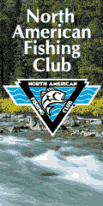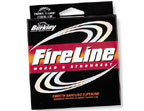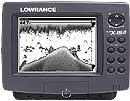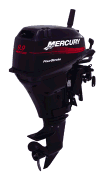





















Free 90 day Risk free trial offer click
here

|
The Path of Most Resistance
By John Kolinski
Editor’s note: John Kolinski is an eight-time championship qualifier
during
his seven years of professional fishing on the Professional Walleye
Trail and
the Masters Walleye Circuit.
Early summer can be a difficult time for walleye anglers. In most systems,
the fish are in transition from post-spawn locations to their summer haunts.
They’re usually scattered. Their forage base is likely changing. Weather
fronts are frequent and unpredictable. Above all, walleyes are often relating
to structure that is difficult to fish with any degree of precision and
consistency. Often, an angler’s ability to follow crooked lines with a
trolling presentation is the most effective way to end up with tight lines
in the boat. It’s a matter of defining and connecting the dots, then following
them to the fish.
Contour trolling doesn’t leave much margin for error. Stray off course
a few
feet and you’ll miss the target areas that typically hold the best
fish. The angler who keeps his or her lures on task, however, can load
up on fish while other anglers are left scratching their heads.
Four of my proven places for walleyes this time of year are sharp breaklines
along the shorelines in both lakes and rivers, inside turns along river
channels, well-defined points in lakes and reservoirs and weed edges anywhere
they occur.
In all of these situations, the key is attacking them systematically
with a
trolling spread that covers multiple depths. Walleyes can be on top
of the
structure feeding actively, cruising a particular depth along the structure
or even laying just off the breaklines in slightly deeper water.

Berkley
Fireline
|
A combination of lead-core rods and Fireline
or monofilament rigs is a good approach that provides the necessary versatility
in depth and control. It’s a good idea to use a 15- to 20-foot monofilament
or Fireline
leader on the end of the lead-core to increase sensitivity and help “read”
the lure’s action through the tip of the rod. |
Too much leader, however, will cause the lead-core to actually drag on
the bottom. In turn, the angler loses contact with the lure and can’t be
certain how it is running. Choosing lures is an important consideration
that factors into depth control as much as the type of line you troll.
If I’m using monofilament or Fireline to search the shallows, floating  are a good choice. Further down the breaks, Rapala’s new Taildancers are
assuming a prominent position in my arsenal along with
are a good choice. Further down the breaks, Rapala’s new Taildancers are
assuming a prominent position in my arsenal along with  Thundercranks. Lead-core line will help get all of these lures as deep
as you need to go in most situations. In most states, anglers are allowed
at least two trolling rods apiece. If I’m fishing alone along a fairly
steep breakline, I put the boat at the outside
Thundercranks. Lead-core line will help get all of these lures as deep
as you need to go in most situations. In most states, anglers are allowed
at least two trolling rods apiece. If I’m fishing alone along a fairly
steep breakline, I put the boat at the outside
edge of the break, then use the monofilament or Fireline on a 10-foot
rod to
cover the top part while cruising the deeper edges with a shorter lead-core
rod placed at a 45-degree angle in the rod holder or in hand to keep
it from
tangling with the other rod when making turns or fighting fish.
Tica, a relatively new player in the American rod and reel market,
offers
models that meet both these needs. The  TC1 10-foot graphite rods give me the reach I need on the outside and the
backbone to pull boards while the heavy-action, 6-foot TC3 casting rods
provide plenty of sensitivity as my inside lead-core sticks.
TC1 10-foot graphite rods give me the reach I need on the outside and the
backbone to pull boards while the heavy-action, 6-foot TC3 casting rods
provide plenty of sensitivity as my inside lead-core sticks.
If there are two anglers in the boat, move a little farther onto the
break so
that three rods are covering different depths along the structure with
the
fourth probing the bottom. When you contact fish, you may have to adjust
your set-up to get more lures in the strike zone. If the walleyes are on
top of the break, for example, you may want to run a planer board or two
out that side of the boat in addition to your mono rod to get multiple
lures in front of the active fish. Conversely, if you’re catching most
of your fish near the bottom of the
break, it may be wise to pull the shallow-running mono rod in favor
of another lead-core rod or switch to a Fireline rod with a deeper-running
crankbait.
Two of the features I always look for are inside turns in river situations
and long points in lakes and reservoirs. You can approach them both
with the
same combination of mono or Fireline and lead-core, but it’s important
not to
turn the boat too soon.
I actually run the boat 25 to 50 feet into the shallower water before
I make
the turn. When I start to follow the contour out again, my lures are
actually
swinging around tight to the structure where fish often load up. If
I start
turning 10 feet too soon, I’ve usually pulled my lures out of
the walleyes’
reach. When fishing points, I’ve found that it doesn’t hurt to cut
them sharply
enough that my cranks are pounding the bottom. Sometimes, that creates
a
reactionary bite from fish that are otherwise uninterested. Contour
trolling is equally effective along weedlines. Most weedlines stop at approximately
the same depth in an individual lake, depending on water clarity and fertility.
If a weedbed ends at 12 or 15 feet of water in a particular lake, you can
establish that depth and set up so you troll the edges where the active
walleyes lurk. If your lures foul, you’ll know by the action of the rod
tip.
Unless I know the contour I’m trolling by heart, I always make a pass
through
the area with one eye fixed to my LCD. You may discover subtle changes
in the
bottom, nooks and crannies along the break, and pockets or protrusions
along
weedlines that can all be hot spots. As you find them, you can enter
waypoints on your GPS and set up a trolling route that will keep you in
the best water.
 |
For that matter, electronics are a key element to fishing any structure
efficiently and effectively. A combination of a quality LCD unit and a
reliable GPS system relate directly to your ability to stay on productive
contours and repeat successful trolling passes.Lowrance’s
new X-15 is an unbelievable unit that answers both calls. |
With a 480x350 pixel display, the degree of resolution provides detail
that leaves no doubt in your mind what you are up against or what type
of structure lies beneath you. The X-15 allows you to detect subtle transitions
from soft or sandy bottoms to harder substrates. You’ll see weed growth
at all stages of its development and you’ll be able to detect the presence
of baitfish. You will know when you are on fish and what part of a particular
contour they are relating to. The unit doubles as a GPS system, too, and
features a waterproof drawer that holds up to two reusable memory cards.
That’s a valuable option that gives an angler the ability to record and
replay trolling passes. It’s helped me pick out the slightest irregularities
on a contour where the walleyes are holding, and it’s helped me identify
the features that make a particular trolling pass productive so that I
can duplicate them in other areas.

Mercury
9.9 h.p.
four-stroke |
Another piece of equipment that I believe makes a difference when I’m
trolling contour is my Mercury 9.9 h.p. four-stroke kicker motor. It’s
as quiet as a sewing machine, a factor that should never be underestimated
in shallow water. It also has the power to help me make quick adjustments
or corrections when necessary and it eliminates the cloud of noxious smoke
that lingers around most two-stroke engines. Haphazardly trolling structure
may yield an occasional fish. However,
fine-tune your efforts and you will be on the path to most resistance. |
E-mail
John Kolinski

Walleyes Inc. web site is maintained
by Randy
Tyler Fishing the In-Fisherman Professional Walleye Circuit, Masters
Walleye Circuit, RCL and the Team Walleye Circuit. All rights reserved.
Copyright 1999/2001
Please visit these site sponsors
Daiichi/Tru-Turn Hooks,
Lindy
Little Joe,
R-A.M Mounting Systems,
Ranger
boats, Mercury Marine, Bedford
Sales , Hamby's Beaching Bumpers,
Goldeneye
Marine products, Panther
Marine Products, Webfoots body
sock, Bait Rigs Tackle
|



 TC1 10-foot graphite rods give me the reach I need on the outside and the
backbone to pull boards while the heavy-action, 6-foot TC3 casting rods
provide plenty of sensitivity as my inside lead-core sticks.
TC1 10-foot graphite rods give me the reach I need on the outside and the
backbone to pull boards while the heavy-action, 6-foot TC3 casting rods
provide plenty of sensitivity as my inside lead-core sticks.


